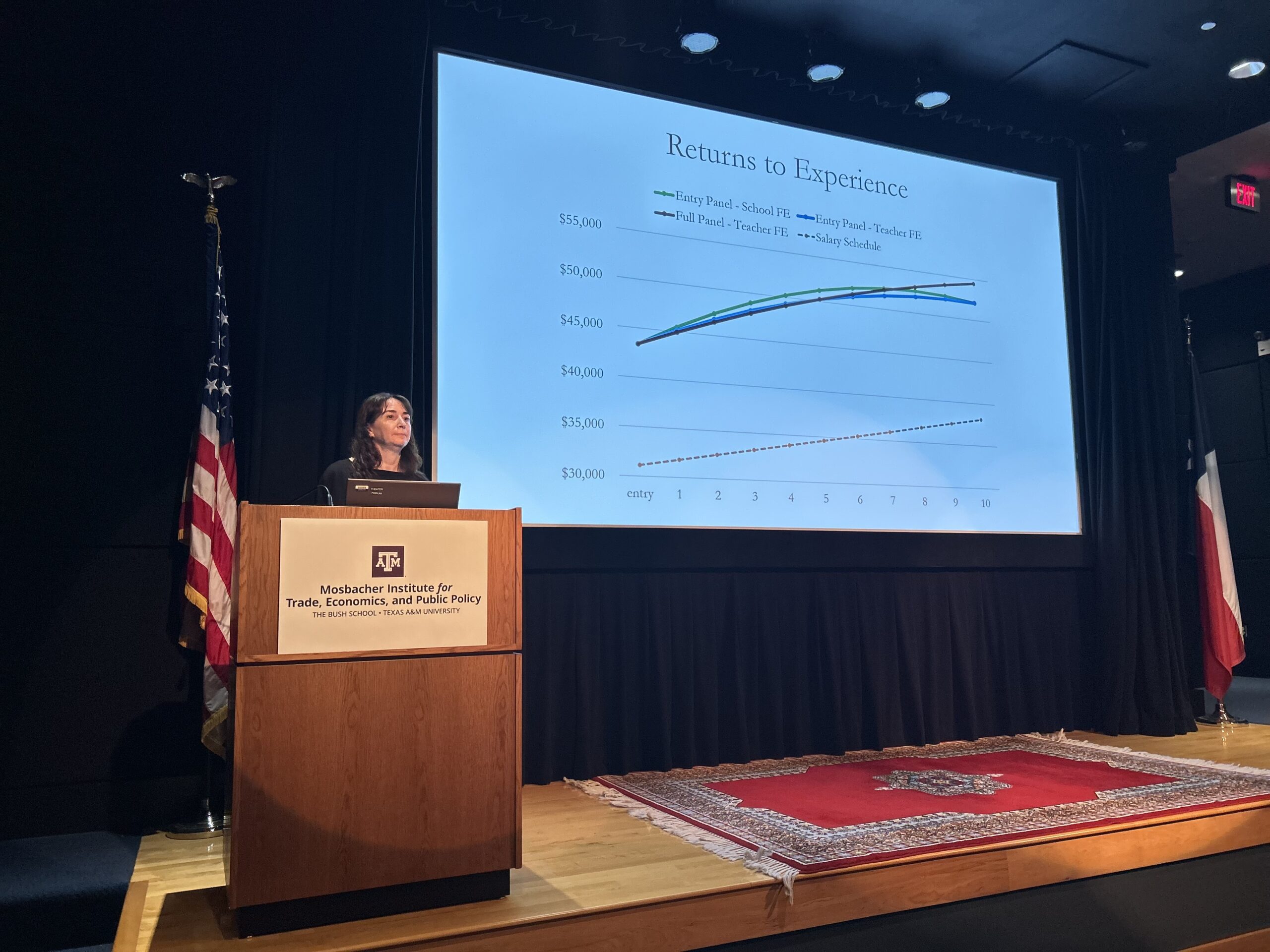
By Shannaya Raul, Bush School INTA Master’s Student
On April 23, 2025, the Mosbacher Institute’s Education Policy Workshop featured Dr. Jane Arnold Lincove, a leading expert in education policy from the University of Maryland, Baltimore County. Lincove presented her research on Teacher Pay in a Competitive Market, with a case study of the charter school system in post-Katrina New Orleans, Louisiana. The research revealed findings concerning teacher compensation patterns and attributes, equity gaps in teacher pay, and limited strategic compensation for challenging assignments. Opening remarks for this event were given by Professor Lori L. Taylor, head of the Department of Public Service and Administration at the Bush School.
View Teacher Pay in a Competitive Market Here
Lincove opened her presentation by explaining the foundation of her research: the critical role of teacher compensation in education production. She emphasized that approximately 80% of public school funding is directed toward teacher salaries, yet traditional public school compensation systems, typically based on rigid district-negotiated salary schedules, do not necessarily reflect market labor values or reward teaching performance effectively. According to the hedonic wage theory, teachers weigh salary against job attributes, meaning schools with less desirable attributes must offer higher wages to attract staff. In practice, however, teacher labor markets within public school systems often fail to function competitively.
Lincove examined whether a system characterized by charter school dominance and substantial human resource autonomy resulted in more efficient or strategic teacher compensation practices. Following Hurricane Katrina, New Orleans’ school system shifted almost entirely to charter schools, effectively eliminating traditional salary schedules, tenure protections, and strict certification requirements. This context provided a unique opportunity to test how deregulation affected teacher pay structures.

Using hedonic wage function models, Lincove analyzed teacher salary differentials based on attributes such as education level, certifications, experience, and demographic characteristics. Regarding compensation patterns, the study found that new teacher base salaries averaged around $42,394, with small additional premiums for master’s degrees and STEM endorsements, while teachers with temporary or full certificates and those recruited through TeachNOLA faced pay penalties. Prior experience had little influence on starting salaries, indicating a stronger preference for an educational background over professional experience. The study also revealed persistent racial and gender pay disparities, with Black and female teachers earning less than their white male counterparts, highlighting equity concerns in the absence of collective bargaining protections. Lastly, despite the flexibility charter schools enjoyed, there was limited strategic use of compensation to attract teachers to challenging roles, with only modest bonuses offered for teaching high-need subjects or in high-poverty schools and just 23% of teachers receiving any supplemental pay.
During the Q&A session, Lincove addressed concerns about the external validity of her findings, noting that while the results are specific to New Orleans due to its unique charter school environment, similar studies could be conducted elsewhere if comparable data were available. She also discussed the limited influence of Louisiana state legislation on teacher pay within autonomous charter systems, reaffirming that local autonomy, not statewide reforms, primarily shaped teacher compensation trends in New Orleans.
Overall, Lincove’s presentation shed light on how education market reforms, autonomy, and deregulation impact the teacher labor markets, offering critical insights for policymakers considering future education reforms at both local and national levels.
